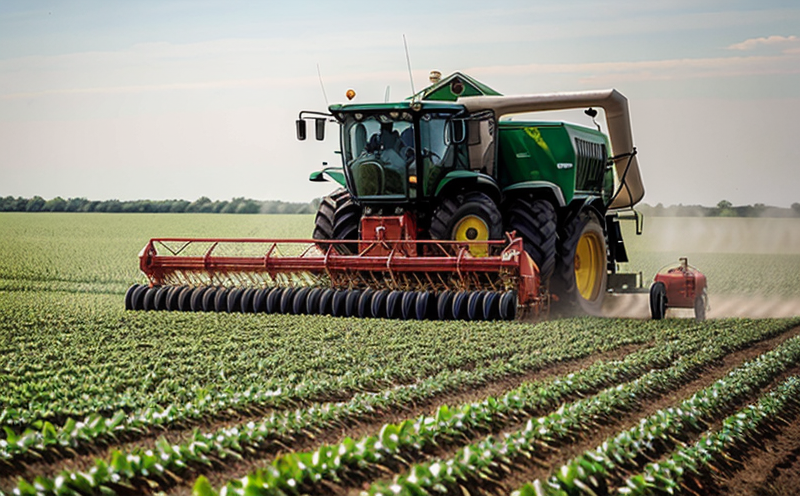Harvest Index Testing
The Harvest Index (HI) is a crucial metric in agriculture and forestry testing that quantifies the efficiency of grain or seed production relative to total plant weight. HI is calculated as the ratio of harvested biomass (grains or seeds) to the total above-ground fresh weight at harvest. This parameter is particularly important for breeders, agronomists, and researchers aiming to improve crop yields and productivity.
HI testing plays a pivotal role in the evaluation of various crops such as wheat, corn, rice, soybeans, and oilseeds. By assessing HI, stakeholders can identify genetic improvements that enhance grain quality and yield efficiency. This metric is especially relevant for sustainable agricultural practices where optimizing resource usage (water, nutrients) is critical.
The process involves precise sampling of plants or plant parts from the field, followed by laboratory analysis using advanced instrumentation like near-infrared spectroscopy (NIRS), which provides rapid and accurate measurements of HI. The method also ensures compliance with international standards such as ISO 13984 for grain crops.
Understanding HI is essential for optimizing crop management strategies, selecting high-yielding varieties, and ensuring economic efficiency in farming operations. By improving HI, farmers can achieve higher returns on investment while reducing resource wastage.
The impact of HI testing extends beyond just the agricultural sector into forestry where similar principles apply to evaluating wood quality and productivity. In this context, HI is used to assess the proportion of usable wood versus total tree biomass. This information aids in sustainable forest management practices that balance economic benefits with environmental conservation.
Environmental and Sustainability Contributions
- Water Efficiency: By optimizing HI, farmers can reduce unnecessary water usage associated with overproduction of non-grain biomass. This contributes to more sustainable irrigation practices.
- Nutrient Utilization: Improved HI leads to better nutrient uptake efficiency, which reduces the need for excessive fertilizers and minimizes environmental pollution from runoff.
The focus on HI also promotes biodiversity by encouraging diverse crop rotations that enhance soil health. Additionally, higher HI values can contribute to carbon sequestration efforts in forests, thereby supporting global climate change mitigation strategies.
Competitive Advantage and Market Impact
Understanding and optimizing Harvest Index provides a competitive edge for agricultural firms by enabling them to develop more efficient crop varieties that meet market demands. This leads to increased profitability through enhanced yield per hectare and lower production costs.
The knowledge gained from HI testing can also be leveraged in international trade negotiations, ensuring compliance with global standards while maintaining product quality. For instance, countries like the United States and China have stringent regulations regarding grain quality that directly impact export markets.
Use Cases and Application Examples
- Crop Breeding Programs: Breeders use HI data to select lines with superior grain-to-plant ratio, which improves overall crop performance.
- Field Trials: Researchers conduct field trials using HI metrics to evaluate the effectiveness of new farming techniques and inputs like pesticides or fertilizers.
In forestry, HI testing is employed in sustainable forest management practices. For example, companies may use HI values to determine optimal harvesting times that maximize wood quality while minimizing environmental impact. This approach ensures long-term sustainability by preserving forest ecosystems for future generations.





